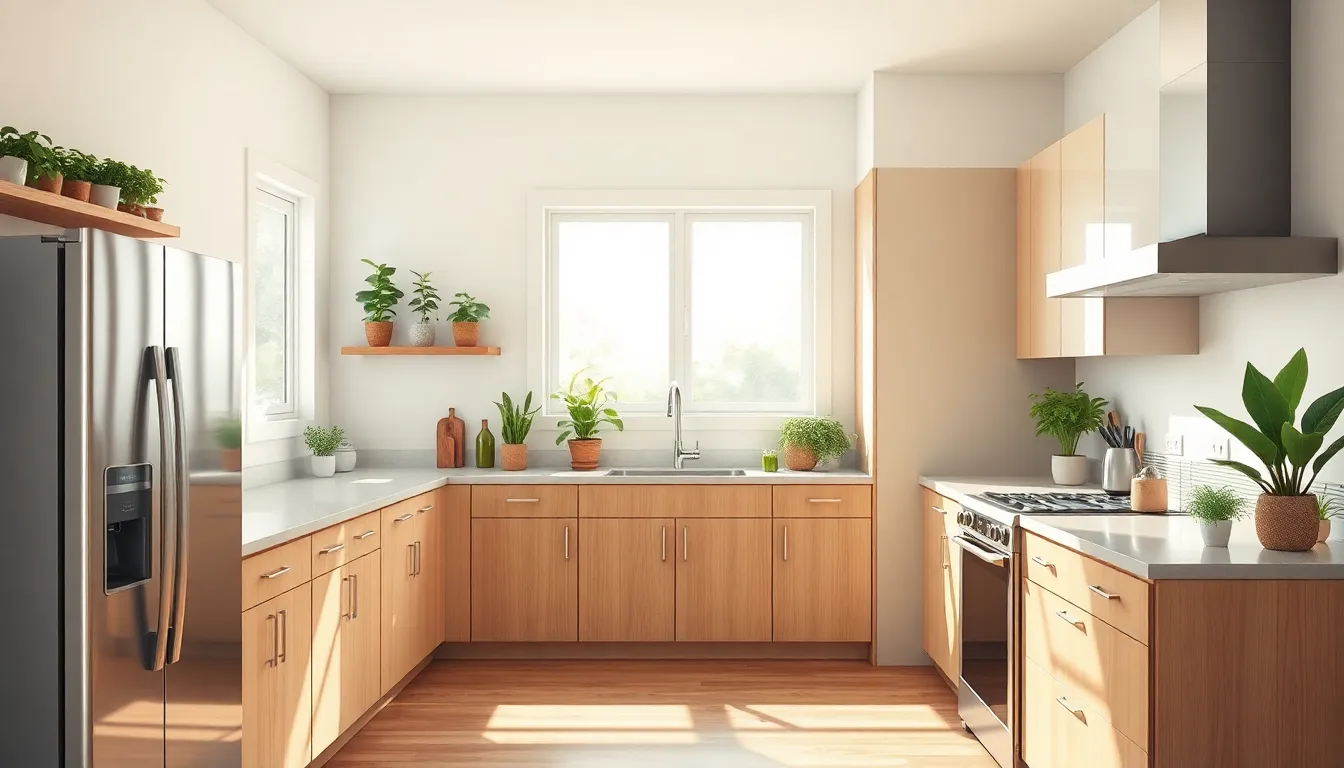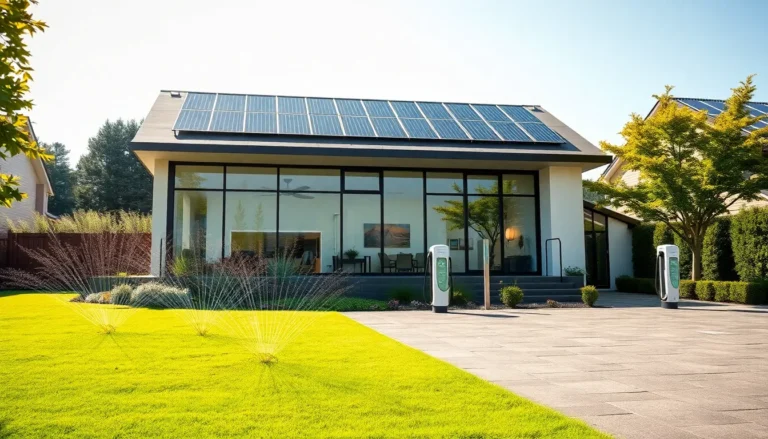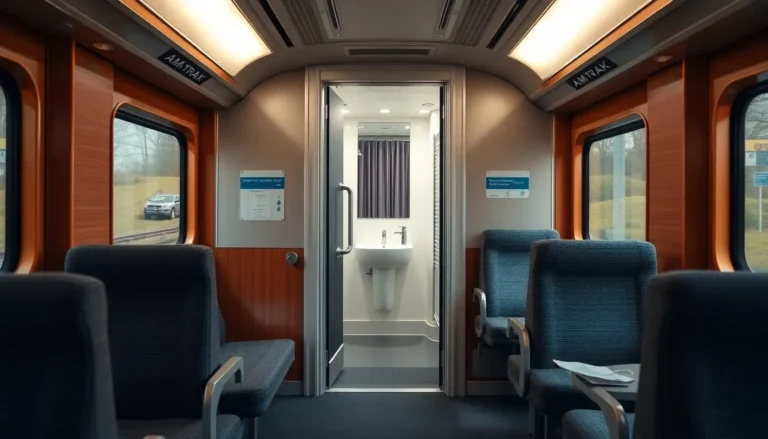In a world where energy bills seem to rise faster than a cat on a hot tin roof, energy conservation at home is the superhero we didn’t know we needed. It’s not just about saving a few bucks; it’s about giving Mother Earth a much-deserved hug. Imagine turning your home into a cozy, eco-friendly fortress that keeps your wallet happy and your conscience clear.
Table of Contents
ToggleUnderstanding Energy Conservation Homes
Energy conservation homes prioritize efficiency, sustainability, and reduced energy consumption. These residences utilize various strategies and technologies to minimize energy waste while enhancing comfort.
Definition of Energy Conservation Home
An energy conservation home incorporates design elements and technologies that optimize energy use. It focuses on features like high-quality insulation, energy-efficient windows, and smart appliances. These homes typically minimize reliance on non-renewable energy sources and integrate renewable energy solutions, such as solar panels. Energy conservation homes strive for a smaller carbon footprint while maintaining a comfortable living environment.
Importance of Energy Conservation
Energy conservation plays a significant role in reducing utility costs and mitigating environmental impact. Homes that adopt energy-saving practices contribute to lower greenhouse gas emissions and conserve valuable resources. Research demonstrates that energy-efficient homes can cut energy bills by up to 30%, providing substantial savings. Additionally, energy conservation fosters a sustainable future by reducing overall energy demand and promoting cleaner energy sources. As energy costs rise, it becomes increasingly vital for homeowners to embrace these strategies for financial and ecological benefits.
Key Features of Energy Conservation Homes


Energy conservation homes include various elements that enhance efficiency and sustainability. Incorporating modern technologies significantly reduces energy consumption.
Energy-Efficient Appliances
Energy-efficient appliances stand out for their low energy usage. Many of these devices consume up to 50% less electricity than standard models. Selecting ENERGY STAR certified products ensures better performance while saving money on utility bills. Consumers who use such appliances can expect longer lifespans and reduced maintenance needs. Switching to energy-efficient appliances contributes to an eco-friendly lifestyle while minimizing overall carbon footprints.
Insulation and Sealing
Proper insulation and sealing significantly boost energy conservation within homes. Effective insulation can reduce heating and cooling costs by up to 30%. Factors such as wall, roof, and floor insulation influence overall energy efficiency. Sealing gaps around windows and doors prevents drafts, enhancing indoor comfort. Homeowners discover that investing in quality insulation materials pays off in long-term energy savings. Energy conservation becomes more efficient with a well-insulated and sealed home.
Benefits of Energy Conservation Homes
Energy conservation homes provide significant advantages that enhance both financial stability and environmental health. These benefits range from reduced utility costs to a smaller carbon footprint.
Cost Savings on Energy Bills
Cost savings represent a primary incentive for adopting energy conservation practices. Homeowners can decrease energy bills by up to 30% with efficient designs and technologies. Smart appliances, for instance, consume up to 50% less electricity compared to standard models. Using ENERGY STAR certified products leads to substantial savings over time, minimizing expenses on electricity. Proper insulation and sealing also play crucial roles in reducing heating and cooling costs, yielding long-term financial benefits. Overall, shifting towards energy-efficient homes ensures lower monthly utility payments.
Environmental Impact
Environmental impact demonstrates another compelling reason to embrace energy conservation homes. These homes contribute to significant reductions in greenhouse gas emissions through efficient energy use. By cutting energy consumption, they help lessen reliance on non-renewable resources. Statistics highlight that energy-efficient homes lower carbon footprints, fostering sustainability and positive ecological outcomes. Homeowners can effectively combat climate change by reducing energy demand. Embracing eco-friendly building materials and sustainable practices enhances not only individual environments but also global ecosystems.
Strategies for Improving Energy Efficiency
Prioritizing energy efficiency leads to significant savings and environmental benefits. Homeowners can adopt various strategies that optimize energy use.
Conducting an Energy Audit
Start by evaluating current energy consumption through an energy audit. This process identifies areas where energy is wasted, such as poorly insulated walls and inefficient appliances. Use professional services or online tools to assess energy performance accurately. After pinpointing problem areas, homeowners can implement targeted improvements. Often, simple adjustments like sealing gaps or upgrading insulation can yield substantial savings, reducing heating and cooling costs by up to 30%. Investing in an energy audit provides valuable insights for creating a more efficient home environment.
Implementing Renewable Energy Sources
Consider integrating renewable energy sources to enhance energy efficiency. Solar panels represent a popular choice, generating clean energy while potentially lowering electricity costs by over 70%. Wind turbines and geothermal systems also offer viable alternatives for homeowners looking to further reduce dependence on non-renewable resources. Each renewable source comes with specific advantages, from reducing carbon footprints to increasing property values. Incentives and rebates from local governments can help offset installation costs, making renewable energy a financially attractive option. Exploring renewable energy solutions allows homeowners to take proactive steps toward sustainability.


